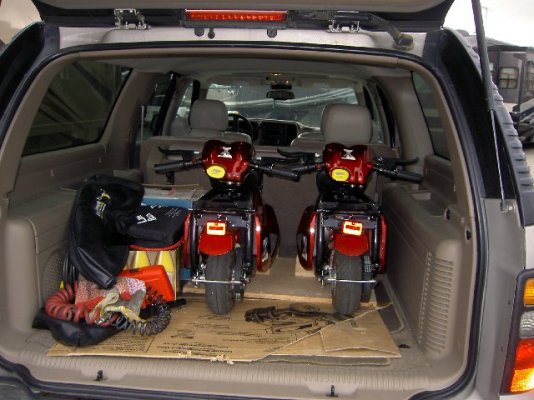1joester2
Well-known member
I've been considering getting a couple scooters to tote around with the RV. I would need the means to carry them, so I was thinking that I could extend the frame rails out the back maybe 3 or 4 feet to make a deck to hold the scooters and whatever else I put there. This would basically move the rear bumper out and the hitch with it.
The only cons I can really think of is hitch height fluctuations and rear bumper swing (if that's the term for having the rear bumper swing out farther when turning a tight turn) while maneuvering.
Does anyone know of someone who has done such a project or am I nuts? I was thinking I could probably enclose it too (eventually).
The only cons I can really think of is hitch height fluctuations and rear bumper swing (if that's the term for having the rear bumper swing out farther when turning a tight turn) while maneuvering.
Does anyone know of someone who has done such a project or am I nuts? I was thinking I could probably enclose it too (eventually).

